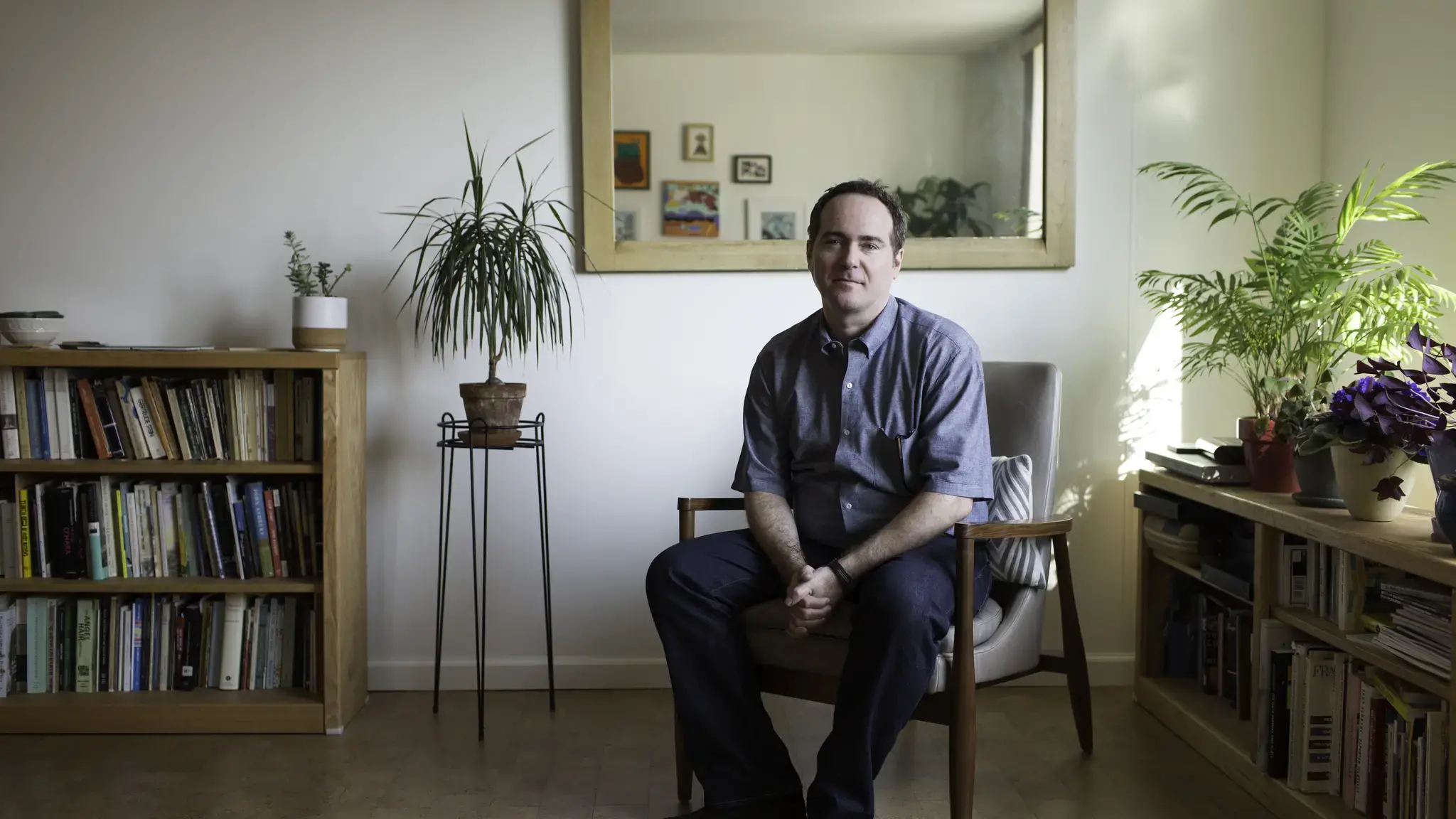

As part of our “Fellows Friday” feature, we focus on the artistic lives of our Pew Fellows: their aspirations, influences, and creative challenges. Throughout this fall, we’re pleased to introduce the 2014 Pew Fellows, and to unveil their official portraits. Visit us each Friday to meet a new Pew Fellow and to learn more about his or her artistic practice.
This week, we speak to Thomas Devaney, the author of one nonfiction book, Letters to Ernesto Neto (Germ Folio, 2004), and four poetry collections, including the recently released Calamity Jane (Furniture Press, 2014). Philly.com described his collaborative work with photographer Will Brown, The Picture That Remains (The Print Center, 2014), as a “beautifully designed book [that] would shine brightly in any gallery, bookshop—or in the hands of any Philadelphian.”
What images or things keep you company in the space where you work?
We have about 15 plants in our apartment. I look at them, really look at them, every day. Two African violets, one that’s always blooming and the other with no flowers at all. Two Oxalis plants: one green, one purple, both with tiny white flowers. A number of succulents and a nearly three-foot-tall money tree plant. Some friends think it’s an avocado tree. Actually, it’s a Malabar Chestnut, but the IKEA sticker—this was at least 10 years ago—said, “Money Tree Plant.”
What is your favorite book title, or title of an art work?
One is Spring in This World of Poor Mutts, which is a book of poems by Joseph Ceravolo. The poet C.D. Wright’s One Big Self is another favorite.
If you could collaborate with anyone alive today (someone you don’t know personally), who would it be?
Great question, and a difficult one. I really can’t name only one. Sometimes I feel that my reason for being is to realize this question as much as my own capacity allows. I think about it all of the time. I think we all converse with those people whose work we adore. Off the top of my head: Oliver Sacks, Clark Terry, Joan Didion, and Frank Bruni.
What do you most daydream about when you are working?
I daydream about walking with a close friend.